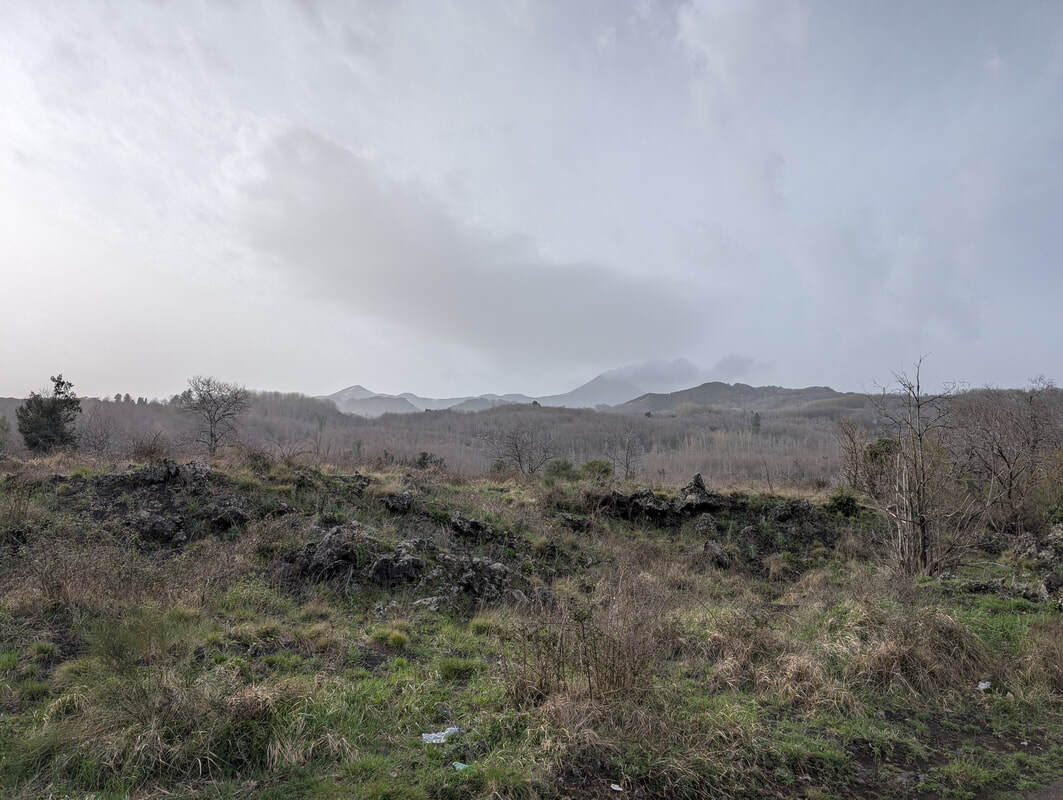- Published on
Climbing Europe's Most Active Volcano in Winter Conditions - Mount Etna
Overall rating: ★★★★☆
Difficulty: ★★☆☆☆- Fairly easy if you follow the main trail, think the final ascent could push this up to a 3 depending on conditions (if the volcano lets you summit)
Start point: Rifugio Sapienza
Distance: 15km
Elevation: 1000m (not quite all the way to the top)
Time: Approx. 6 hours - including a long stop at the top cable car station
Gear needed: Standard hiking gear, boots are helpful to keep ash out of your shoes. Crampons needed in winter if attempting summit.
Need to know: Etna is Europe's (and one of the world's) most active volcanoes and is almost constantly erupting in one form or another. There are restrictions on how high you can go without a guide, and though these are seemingly easily bypassed, it would be wise to take these into account for your own safety.
Rising from the Mediterranean, Mount Etna stands as the highest volcano in Europe, the highest mountain in southern Italy and one of the world’s most active volcanoes. What better idea then, than to try to climb it (I am told sarcasm doesn’t translate well in writing).
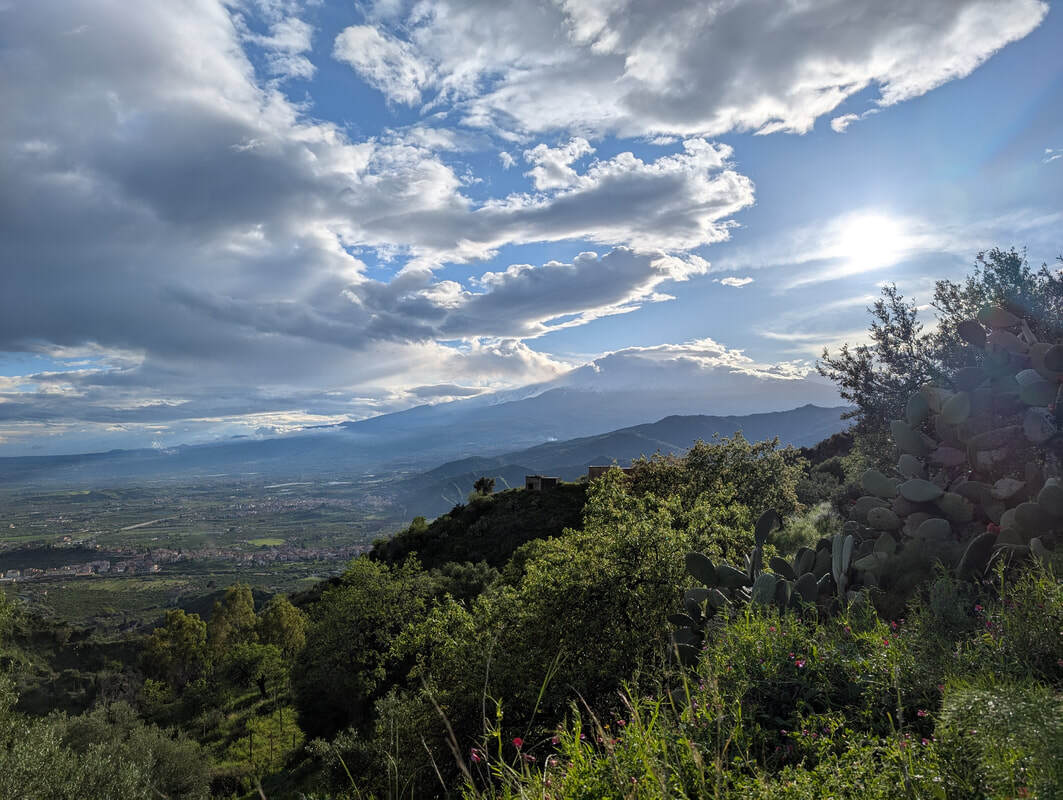
Anyone who has been to the eastern (Catania) side of Sicily will be able to attest that everything seems to have gotten the Etna treatment – cafés, accommodation, wine, even kebab shops bear the Etna name. It’s clear that Etna is a huge draw for tourism in the region. Our trip to Sicily, in March ’25, was characterised by wind, rain and clouds – not the Sicilian weather that those tourists are coming for in peak season. (We later discovered that this is fairly standard March weather.) However, when there is a break in the clouds and Etna shows her face, it is clear to see what all the fuss is about.
Etna absolutely dominates the Sicilian skyline, with the highest mountain outside of the Etna park being almost a vertical mile shorter. That mountain also has possibly the most stereotypical Italian name, for anyone keen on doing some extra research. Whilst the remainder of the island sports picturesque Italian countryside and crystal-clear water, Etna constantly reminds onlookers of its fiery nature, with a near constant puff of smoke rising from its summit.
There are two main routes towards the summit – from the south or north. The latter seems to be the less well-trodden and facilitates ski touring in the winter months. The south, meanwhile, has all the infrastructure, cable cars, refuges and a starting point with enough tourist infrastructure to rival Disneyland. Given the poor weather forecast, we opted for an ascent from the south.
The Ascent
We arrived at Refugio Sapienza at 7 am, one of the first cars in the car park. The entire drive had been a tale of on and off rain, and the weather at the trailhead was no different. We were pleased to find the refuge had just opened for the day, earlier than we thought, so we obliged to have a coffee, some breakfast and warm up inside whilst we decided the plan of attack.
The weather was due to clear up slightly from 8 am, with a potential clearing higher up the mountain around lunchtime. So, when the clock ticked round to 8, we begrudgingly left the warmth of the friendly refuge and set off in relative dry weather.
We vowed not to take the cable car (it would later be shut by the wind anyway), which left us with two route options – a slog up under the cable car or a slightly longer, windy route that serves the huge off-road buses that ferry tourists up to the top cable car station. We chose the latter, but gather that in the summer months, this is made unpleasant by the sheer volume of tourists in buses and on quad bikes kicking up ash. Thankfully, most people aren’t mad enough to visit on a rainy March day, and the rain had dampened the ash down for the few buses that did pass.
Our “dry” weather window did not last long – within half an hour the heavens opened, accompanied by a crack of thunder higher up the mountain – a reminder of nature’s power all too present. We were quickly soaked through to the skin. We would spend the remainder of the climb trying to dry off, for which the wind thankfully helped.
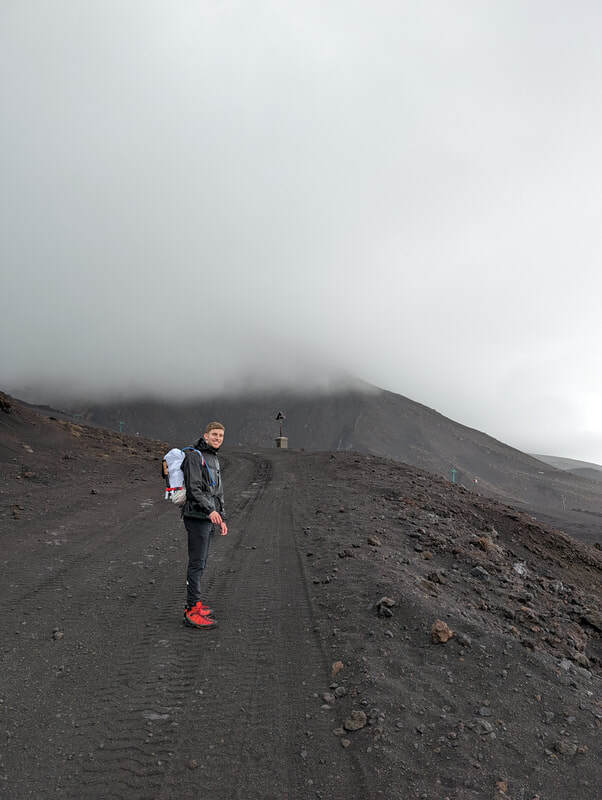
In the grey clouds on Etna, the terrain is decisively monochrome, with the black ash contrasting sharply with the white snow still clinging on from winter. This is certainly not a beautiful climb in the traditional sense, but is certainly a unique one and is inspiring in its own way.
Within a couple of hours, and without too much difficulty, the snowploughed path led us to the top of the cable car station and a welcome refuge. We tried, largely in vain, to dry off our down jackets on the electric heaters and warmed our hands with coffee and hot chocolate. Posters in the refuge also made clear what we had already gathered from research – that ascending beyond approximately 2800m without a guide was forbidden due to volcanic activity. Not keen on joining a guided tour, which didn’t seem to be summiting anyway given the weather, we eventually coaxed ourselves out of the relative warmth and back into the wind, vowing to go as high as we could.
The path continued as before, except with no buses and growing snow walls on either side. The wind was also picking up as we gained altitude, blowing the cloud away to reveal glimpses of Sicily below before quickly concealing them again.
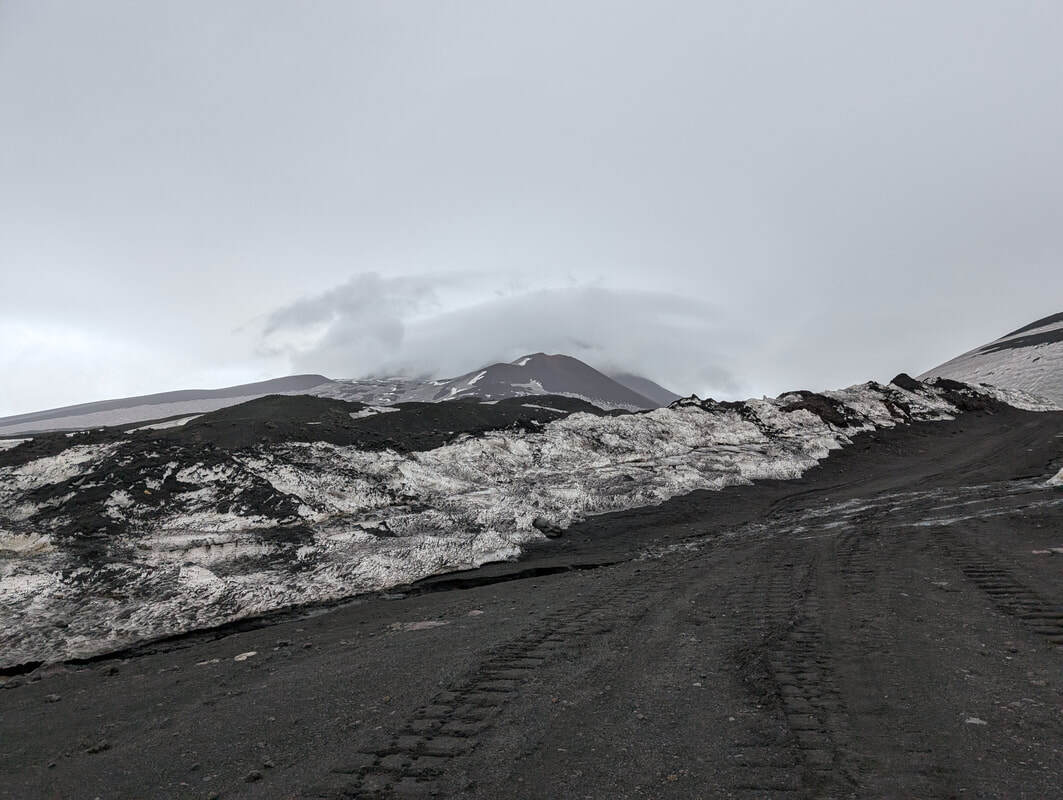

Just below 2800m, the snow ploughed path came to an end. A well-trodden path out over the snow and ice continued upwards, though. A couple were on their way down this as we arrived, slipping their way down the ice. We had bought crampons, so we decided to give it a shot. Hopes were growing that maybe we would reach the summit after all.
These hopes did not last long – it quickly became apparent that this would not be the case. We were soon fully in cloud, which was clinging to this last icy section of the mountain; visibility was very poor. Though the crampons made light work of the snow and ice, without the ploughed track's walls of snow, we were now at the full mercy of the wind. Gusts of up to 70kph were now pelting us with ice and ash, and made placing every step accurately a challenge. Not trying to be heroes (or lose an eye to a piece of pumice), we reluctantly turned around after about another 100m of elevation. The summit went unattained, though we had reached the highest permissible point, which I think is a fair achievement on an active volcano in gale force winds.
Once back on the snowploughed path, we picked up the pace to lose height quickly and get out of the worst of the wind, which was much worse now that we were descending directly into it. I turned around to look back up the mountain and, for a split second, the clouds parted enough to reveal a small lava stream making its way from below one of the summit craters. It could have only been 100-200m above where we turned around. A narrow escape? I guess we’ll never know – probably for the best.
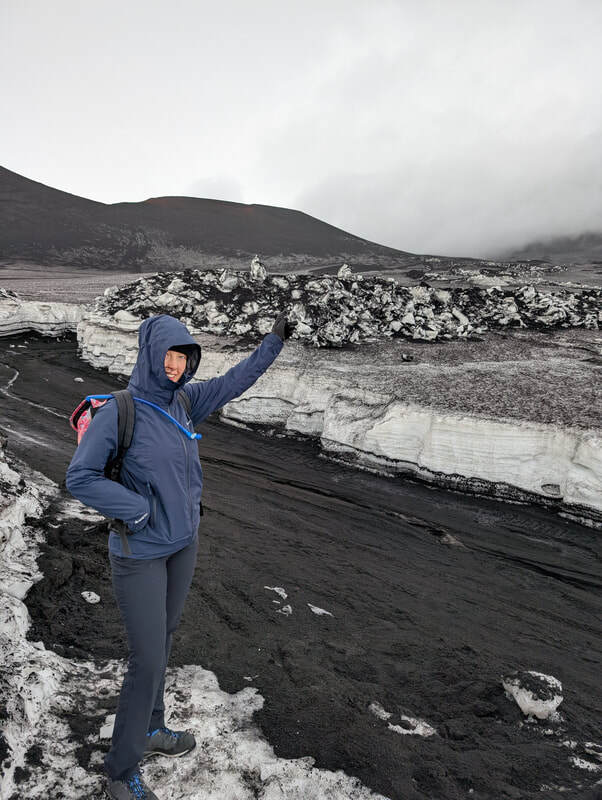


Planning a Trip? - Some Practicalities
GPX Route
This GPX route was recorded by us during our ascent (as is reflected in the 3D map). The actual route on Etna can change based on volcanic conditions and restrictions, so treat this as a rough guide rather than a precise plan. Always prepare carefully and follow local safety guidance (see note on volcanic activity below).
Parking
There is a huge car park at Rifugio Sapienza, and we had no issues finding a car parking space, though it was a miserable morning, which probably helped. There is a man who goes around to hand out parking tickets; we paid 5 euros for the day. He was very friendly and gave us change on a 50 euro note (oops, sorry). Needless to say, you need cash.
When to Climb
You can, in theory, climb Etna year-round. However, a heavy dump of snow or volcanic activity would put the brakes on that (see below). Lying slow is most likely November through March.
Terrain
The main path itself is quite easy underfoot and unremarkable. We wore 4-season boots/ B2s, and these certainly helped keep our feet warm. In the summer months, you could probably get away with trainers, but ankle support would be welcome if only to keep ash and stones out.
We took crampons/spikes, given the time of year we climbed, which we did not need until towards the very top.
Refuges
Both of the refuges we visited were very welcoming and offered a welcome respite from the poor weather. Sapienza is very well equipped and warm; it even has a log fire. You can stay here overnight, but even if you're just visiting for the day like us, there is food available to purchase for breakfast and lunch. The top cable car station also serves food and drink and has toilets, but is generally more basic than Sapienza.
Weather
Given Etna’s high altitude and island location, cloud cover is common, and the weather can change quickly. Keeping a close eye on the forecast is always a good idea. Equally useful is the webcam of the summit craters (embedded below), which gives a helpful live glimpse of the upper mountain so you can get an idea of what weather to expect on the day.
Volcanic Activity
The elephant in the room is that Etna is one of the world’s most active volcanoes. Though you can grit your teeth through wind and rain, if there’s an eruption, then you probably don’t want to be up there (an understatement). Etna is almost constantly erupting in one form or another – the majority of the time this is in the form of degassing, but violent eruptions can and will occur without warning. Keep an eye on the exclusion zones (link), which change based on current activity and dictate how high you can go with and without a guide. Though these regulations seem to be loosely enforced, they provide a good guide for how high you can “safely” ascend. We would not recommend pushing your luck with these regulations. Various sites outline the current activity of the volcano. Whilst these are certainly useful, they are not forecasts. Ascend at your own peril.
